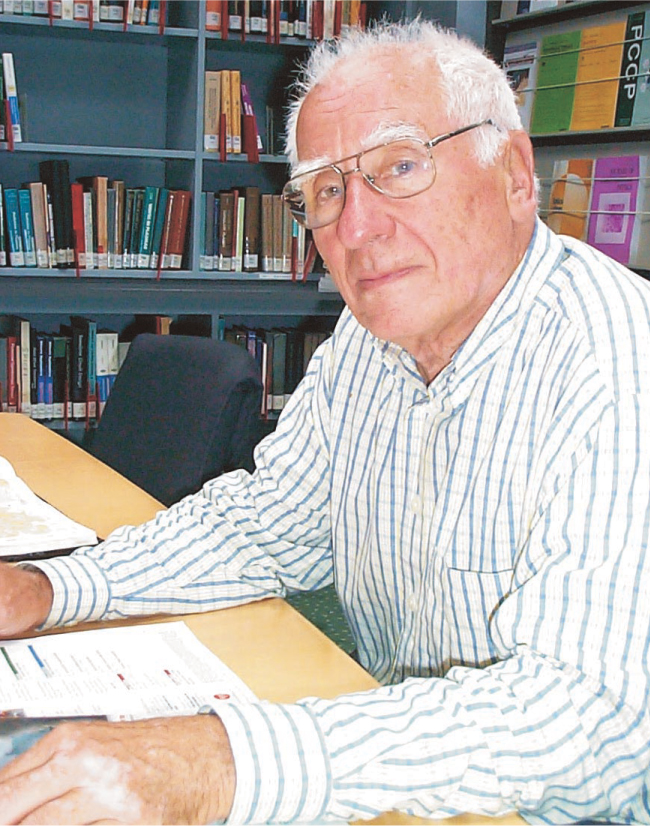Cornelis Marius Braams
DOI: 10.1063/1.1784282
Cornelis Marius “Kees” Braams, a fusion pioneer and emeritus professor in plasma physics at Utrecht University, died in De Heeg, the Netherlands, on 29 July 2003, following a heart attack. For three decades, Braams was the personification of fusion research in the Netherlands: He was a founder and the first director of the Foundation for Fundamental Research on Matter (FOM) Institute for Plasma Physics “Rijnhuizen.”
Braams was born in ‘s Hertogenbosch, the Netherlands, on 5 July 1925. Following World War II, he studied physics and mathematics at Utrecht, where he graduated in 1952 with a master’s degree in physics. In that same year, Nature published his explanation of the phenomenon of the so-called Tippe Top, a toy that spontaneously turns itself upside down when spinning. He conducted part of his thesis studies at MIT from 1952 to 1954. In 1956, he received his PhD from Utrecht for his thesis, entitled “Energy Levels of Calcium Isotopes,” under the guidance of Pieter Endt.
In the following years, Braams was actively involved in the foundation of Rijnhuizen, for which he was the director from 1959 until his retirement in 1987. His scientific interests in fusion research were concentrated mainly on the transition regime from gas discharges to plasmas. He tried to answer questions such as, Can a rotating gas blanket be used to stabilize a toroidal arc? And can the combustion process in a reactor be maintained by removing the ashes by means of diffusion to and from a coldgas blanket?
In 1962, Braams became a professor of plasma physics at Utrecht and mentored a large number of doctoral students, whom he taught to be critical and independent scientists. During the year 1963–64, he worked at the Boeing Scientific Research Laboratories in Seattle, Washington, in the Plasma Physics Laboratory.
Braams was very active in building the joint European fusion research network. He was a member of numerous national and international committees and councils, very often in the role of chairman. He was especially instrumental in the realization of the Joint European Torus, or JET, project and, in 1979, became the first chairman of its scientific council. In the Netherlands, he reanimated the Dutch Physical Society during his chairmanship in the 1970s. During all those public activities, he managed to find time for his other passions. With his sons, he designed and handcrafted a seaworthy yacht. His beautiful collection of exotic trees on the park grounds surrounding Rijnhuizen is a living testimony to his strong love for nature.
At his retirement, Braams was awarded a royal decoration by Queen Beatrix of the Netherlands. He later saw it as his duty to record the scientific history of fusion research of magnetically confined plasmas. He did this in his own style, by checking all the facts, preferably by contacting the main characters directly. The result is a book he wrote with Peter Stott, entitled Nuclear Fusion, Half a Century of Magnetic Confinement Research (Institute of Physics, 2002). Braams was a passionate physicist, ever ready to fight pseudoscience, especially if fusion was involved. Whether it was ball lightning or cold fusion, he built his criticisms on a solid and thorough scientific analysis.
Until his death, Braams worked a few days a week in “his” institute, where he still had an office. He remained especially active in engaging public interest in fusion research, for which he had always been an untiring and well-spoken advocate.

Cornelis Marius Braams
FOM INSTITUTE FOR PLASMA PHYSICS

More about the Authors
Niek Lopes Cardozo. FOM Institute for Plasma Physics, “Rijnhuizen”, Nieuwegein, the Netherlands .
Noud Oomens. FOM Institute for Plasma Physics, “Rijnhuizen”, Nieuwegein, the Netherlands .
Mark Westra. FOM Institute for Plasma Physics, “Rijnhuizen”, Nieuwegein, the Netherlands .
